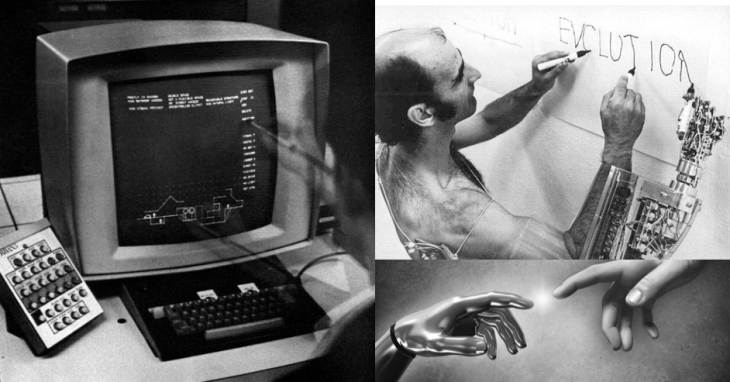Whenever an architect or a designer starts to work on a creative project, they tend to use the best outcome of this technology era -computers- for reflecting their ideas into paper or for transforming an idea to real with digital fabrication process. However at the late years of 60’s, computer aided design was an alienist idea which is far away from reality, yet, Nicholas Negroponte’s Toward a Theory of Architecture Machines paper is quite interesting. He imagined the direction of today’s world technology way back. In this paper, I would like to analyse main ideas from the text.
In the text written late 60’s, Negroponte mentioned about the designing three machines which can interact with humans and learn about architecture or even learn about learning architecture. A device can provide a partnership between two intelligent systems in order to create methods, design or solve problems – an evolutionary learning machine.For the assemblage of this mechanism, it is necessary to have these five components/ processes; a heuristic mechanism, a rote apparatus, a conditioning device, a reward selector, a forgetting convenience. At the end, this relationship between these systems will allow architecture machines to store data, methods, experiences etc. and also to spread these knowledge between other machines.

On the other hand, few doubts and concerns may occur about this article such as authenticity, questioning the creator, role of architect in the new order. After machines start to act bigger role in the designing process, to whom this design will belong to? What will be the role of architect in this new order? Since machines start to learn about learning architecture, they will create minions to solve their problems about timing. Who will become the creator? What if they realise that they don’t longer need us?
Intelligent Machines is a project of IaaC, Institute for Advanced Architecture of Catalonia developed at Master in Advanced Architecture in 2015 of the Academic Program by:
Student:
Lalin Keyvan
Faculty:
Manuel Gausa
Ricardo Devesa
Mate Bravo
